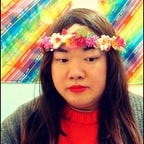In defense of Choice Feminism
Recently, it seems that it has become fashionable to attack “choice feminism,” i.e. the kind of feminism that is about empowering women to make choices. “Choice feminism” is variously described as having a focus on the middle class — a product that is by and for white women only, and so on. The kind of choices that “choice feminism” has given women has also been trivialized, along the lines of what to have for lunch and what brand of cosmetics to use. Reading all this has made me really concerned, because it is unfair, ahistorical, and indeed, dangerous.
“Choice feminism,” or liberal feminism as it should properly be called, is all about striving for any woman to have the same rights, same opportunities and same respect as any man.
Historically, it has also been the most successful branch of feminism. Liberal feminism was largely responsible for many gains of the last century, including voting rights, education rights and more equal pay at work. This success was due to several reasons.
Firstly, liberal feminism is simply a logical extension to liberal values. Liberal feminism was able to gain broad-based support, because its goals were just logical to anyone who already believed in liberty and equality. Many early feminists were both liberals and liberal feminists, and many liberal men of that era, John Stuart Mill perhaps the most famous of them, were also keen supporters of women’s rights.
Secondly, liberal feminism has always maintained a tight focus, squarely on the matter of gender equality. As various branches of radical feminism are strongly associated with socialism, Marxism, atheism and so on, they often expand excessive energy and political capital in fighting for these other causes. Even recently, some feminists have noted that (radical) feminism is spreading itself too thin, noting that the environmentalist movement or the marriage equality movement, for example, have a much tighter focus. If not for the strong focus of liberal feminists, women’s rights would probably have gone nowhere in the past century.
There’s also nothing wrong with giving women choices.
The condition of women's lives a century ago was heavily characterized by a lack of choice. Women had no choice economically, politically, or socially. Therefore, they were powerless in almost all aspects of their lives.
Liberal feminism has given women:
- political choice (via the right to vote and stand for office),
- economic choice (via the opportunity to work and the right to equal pay), and
- social choice (via dismantling the social pressure that women must live a certain way) …
… and the world is better for it. Women’s political choices have shaped political outcomes heavily. For example, most U.S. Democratic victories in the past century wouldn’t have been if not for women’s suffrage. Women’s economic choices have meant that men cannot just take them for granted or treat them like slaves anymore. Only those lacking in historical vision would trivialize “choice feminism.”
Liberal feminism is still fulfilling important functions today.
Liberal feminism remains very serious about the idea of making sure that any woman has the same political, economic and social choices as any man. As a result, liberal feminists respect that any woman can equally be as left-wing, right-wing or anywhere in between as any man, because anything else is unacceptable.
This stands in contrast to many forms of radical feminism, where women can be made to feel unwelcome if they don’t “toe the party line.” Liberal feminism is also uniquely suited to deal with intersectional issues, due to its inherent respect of individual choice. Liberal feminism has absolutely no problems with the fact that ethnic or queer women may have a different perspective on life and hence different priorities and choices, and will never pressure these women to fall into line with the views and choices of mainstream straight, white feminism. The fact that liberal feminism has never had the severe transphobia that to some extent still plagues radical feminism is a good example.
“Choice feminism,” or liberal feminism as it should be known as, is no trivial thing. Striving for women to have the same choices as men is at the very heart of feminism, and without this ideal there would not have been any feminism at all. Furthermore, in today’s world, liberal feminism also serves as a respectful template to build a new intersectional feminism upon.
The golden age of liberal feminism might have just begun.
